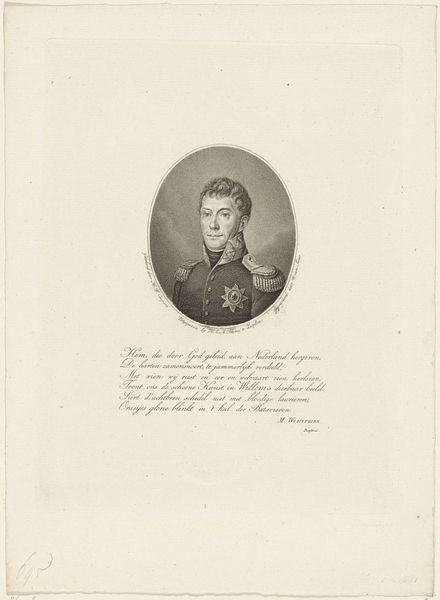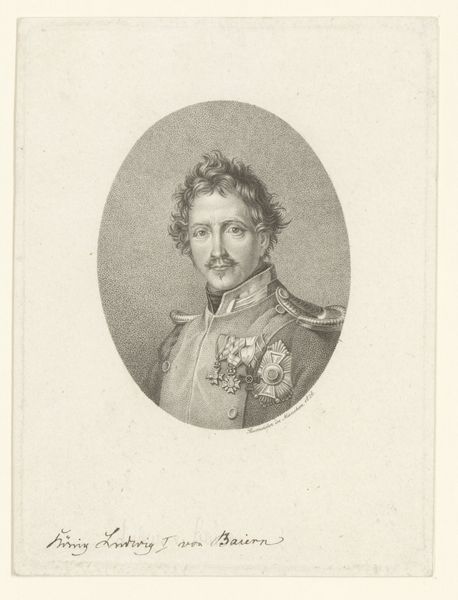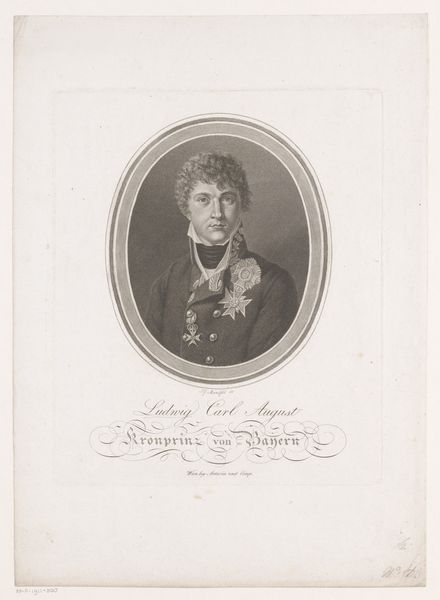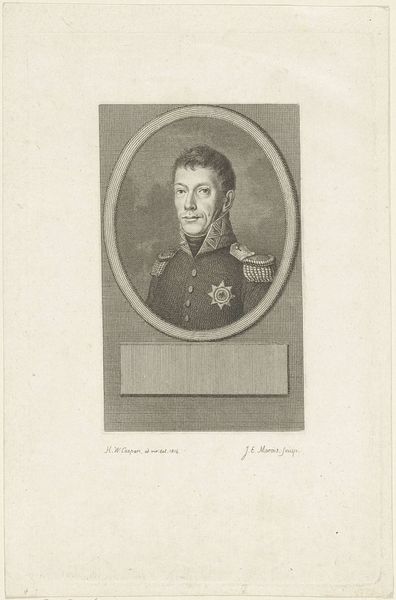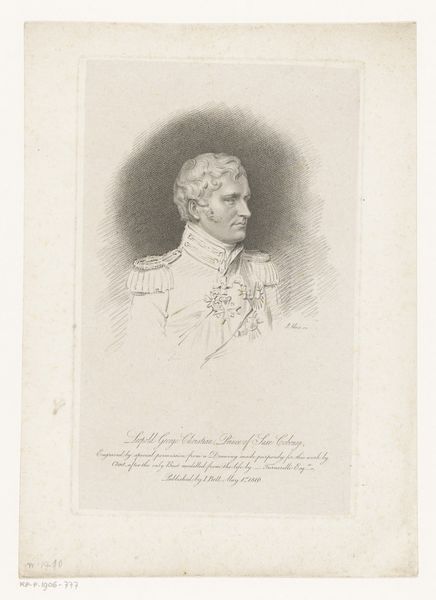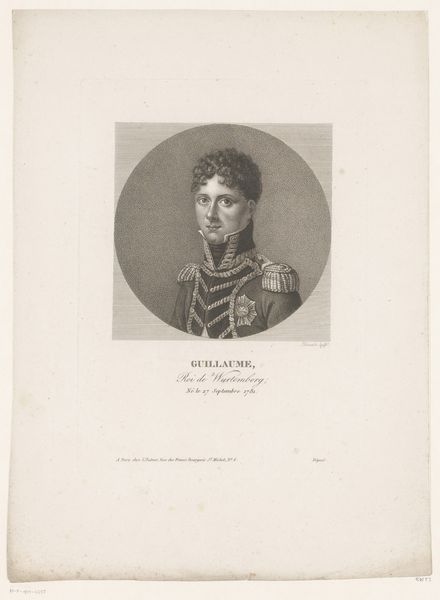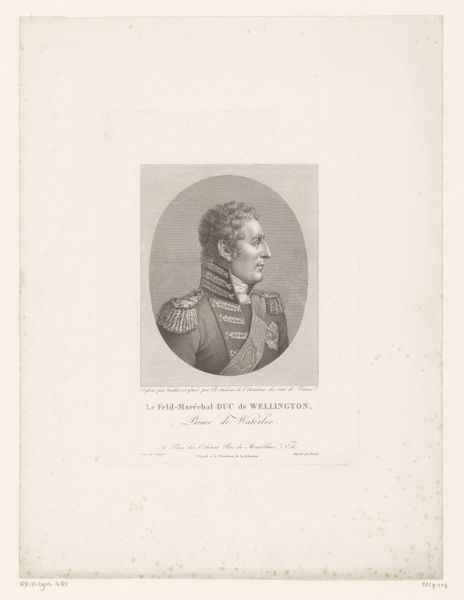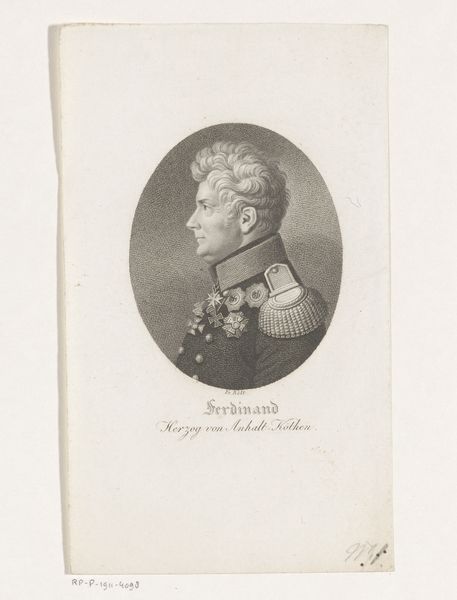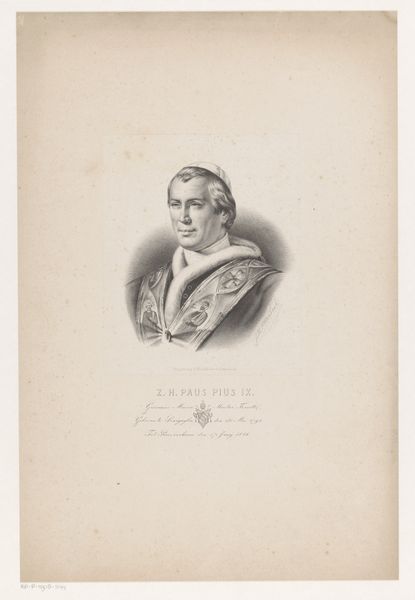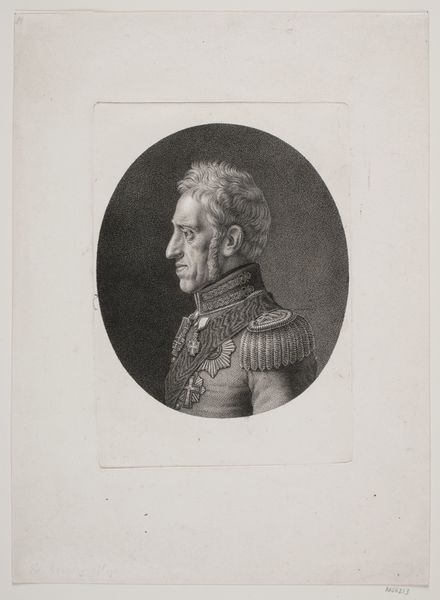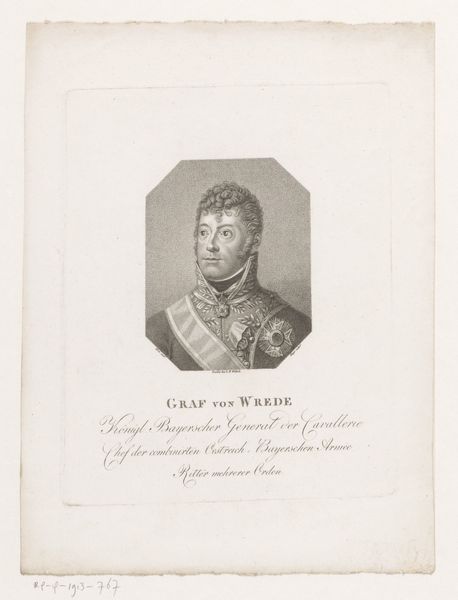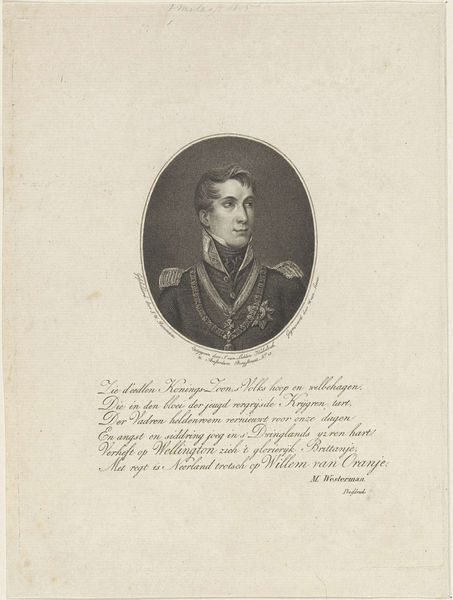
print, engraving
#
portrait
#
neoclacissism
# print
#
old engraving style
#
history-painting
#
engraving
Dimensions: height 106 mm, width 63 mm
Copyright: Rijks Museum: Open Domain
Editor: Here we have "Portrait of August of Saxe-Gotha-Altenburg," an engraving made around 1800-1813, currently housed at the Rijksmuseum. The subject is strikingly severe; how would you interpret this work, focusing on its formal elements? Curator: Considering its formal qualities, I'm particularly drawn to the contrast achieved through the engraving technique. Notice the meticulous layering of fine lines. How does the density of these lines contribute to the modeling of form? Observe how areas of shadow are built up incrementally, creating a subtle gradation that defines the subject's features. Editor: I see what you mean. It's not just about light and shadow, but how those are constructed. Do you think the artist is using that contrast to convey information? Curator: Precisely! The strategic use of contrasting values accentuates the subject's sharp profile and regal bearing. Consider the way the eye is led around the composition through a carefully orchestrated pattern of light and dark. The play of light on the star, and its relation to other bright surfaces: the shoulder and forehead, form an angle. How do these relate, geometrically? Editor: It almost creates a focal point on the figure's stern expression. It does seem designed to express dignity and nobility, while being quite economical with visual elements. Curator: Indeed. The composition embodies a refined Neoclassical sensibility through its emphasis on linear precision and balanced tonal relationships, achieved by the manipulation of only engraving techniques. Have we overlooked any other details worth studying more closely? Editor: Looking closely now, I hadn’t paid as much attention to the hair initially; seeing it anew, the fine details really contribute to the overall aesthetic of calculated poise and authority. Thanks, this formal reading has brought it all into focus! Curator: A formal approach rewards detailed examination. Looking closer reveals intentional and surprising visual information within artworks.
Comments
No comments
Be the first to comment and join the conversation on the ultimate creative platform.
